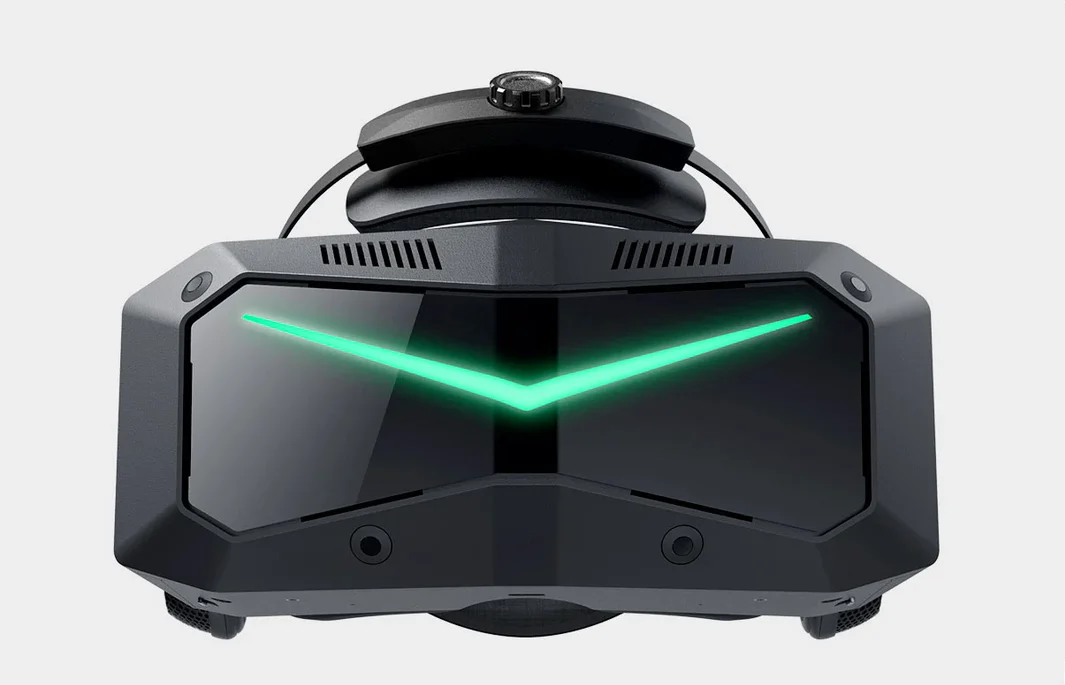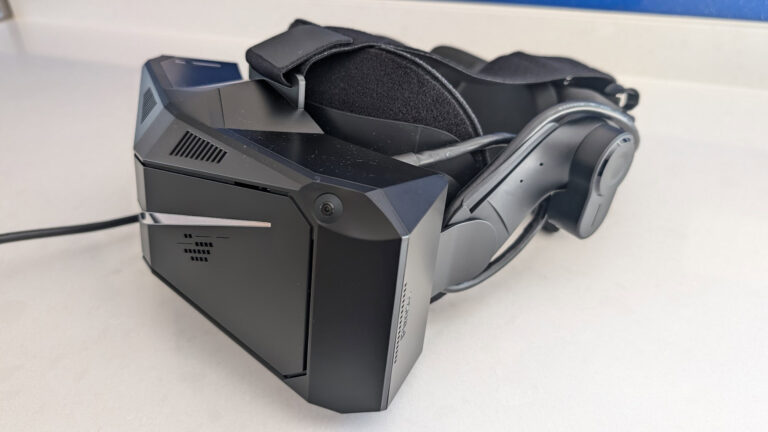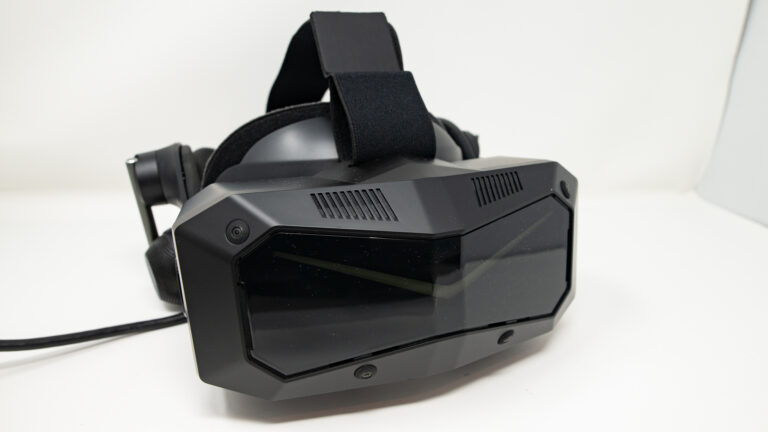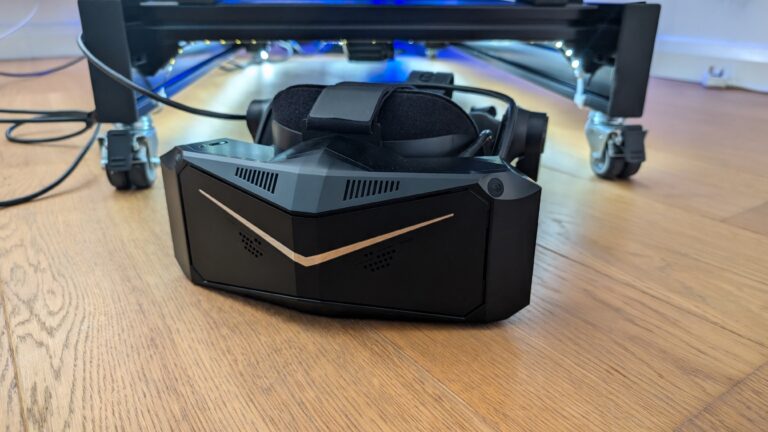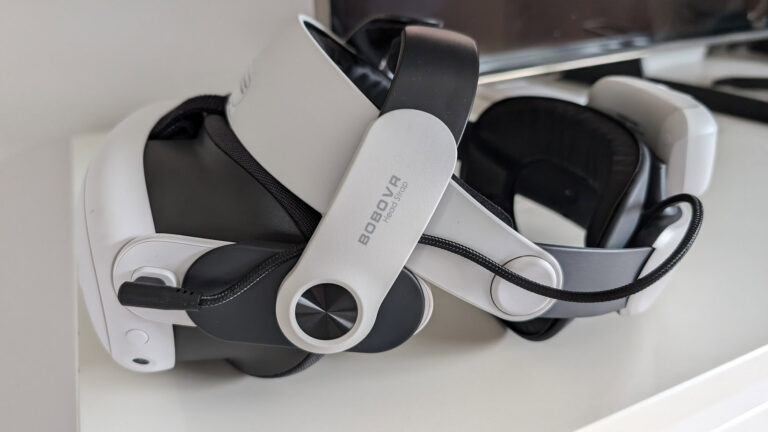Right, let’s talk about the elephant in the cockpit – if you wear glasses, getting into VR sim racing feels like choosing between clarity and comfort. I’ve been there myself, squinting at brake markers whilst my frames dig into my temples during longer stints. Well, Pimax have just thrown down the gauntlet with their Crystal Super, and they’re bundling free prescription lenses worth £125. But there’s more to this story than just a freebie.
The Crystal Super has been making waves in the sim racing community since late 2024, and for good reason. With its frankly ridiculous 57 PPD (pixels per degree) resolution and swappable optical engines, it’s positioned itself as the heavyweight champion of visual clarity. One sim racer recently posted about their AMS2 experience: “made me feel like I was in an open wheel race car inches off the ground driving at speeds I have no training for!” That’s quite the endorsement, especially when compared to the “removed feeling” they got from the Quest 3’s narrower field of view.
The 1-Metre Focus Distance – Why It Matters
Here’s where things get interesting. Most VR headsets are tuned to focus at 1.5-2 metres – basically where your TV would sit. The Crystal Super? They’ve set it at 1 metre. For sim racing, this is brilliant. Your dashboard, wheel display, and those crucial apex markers are all within that sweet spot. It’s like the difference between wearing your reading glasses and your distance glasses – everything in the cockpit just snaps into focus.
This closer focal distance works particularly well if you’ve got mild short-sightedness. You might find you need less correction than usual, or in some cases, none at all. But here’s the thing – your standard prescription probably isn’t optimised for this distance, which brings us to your options.
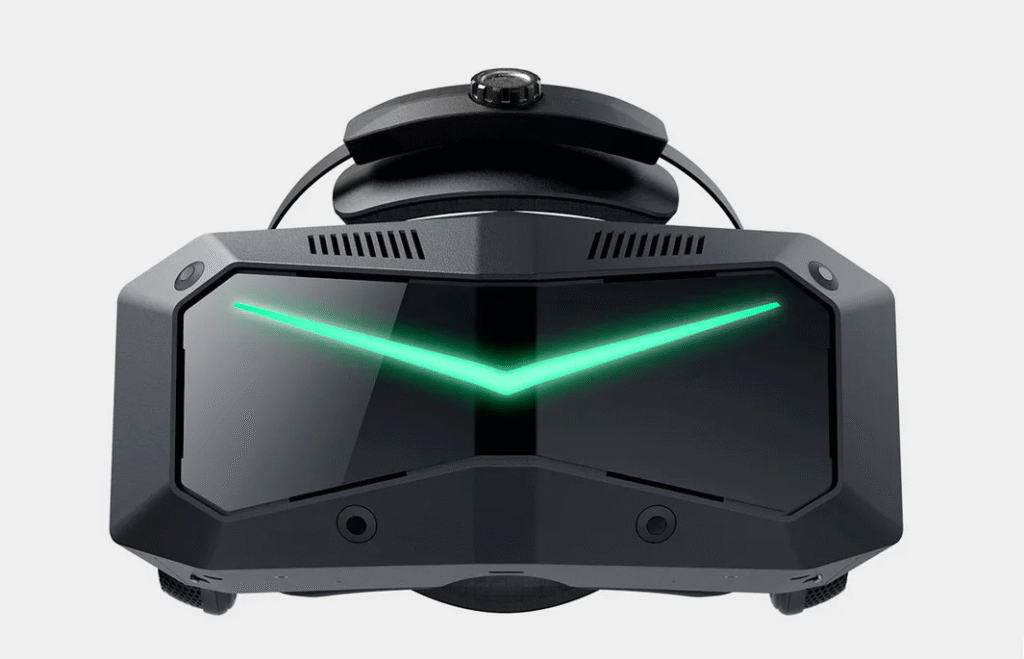
How to Improve Your VR Vision
Option 1: Wearing Your Everyday Glasses
The Crystal Super has decent room inside for most frames, and you’re up and running immediately.
But after a two-hour stint at Spa, you’ll know about it. The pressure points on your nose and temples become properly uncomfortable, and depending on your prescription, things might not be quite as sharp as you’d like. It’s fine for testing the waters, but not ideal for serious sim racing.
Option 2: Contact Lenses
This is what I switched to initially, and it’s a game-changer. No frame interference, full field of view, and you can properly appreciate that 120-degree FOV (or 135 degrees if you go for the 50 PPD QLED variant). Reading your dash displays, checking mirrors, spotting late brakers – it all just works.
The downside? If you’re not already a contact lens wearer, there’s a learning curve. Plus, after a few hours of intense racing where you forget to blink, dry eyes become a real issue. And obviously, there’s the ongoing cost to consider.
Option 3: Custom Prescription Inserts (The Smart Money)
This is where Pimax’s current offer gets interesting. Custom prescription inserts are honestly the best solution for serious sim racing. They’re designed specifically for the headset’s optics and focal distance, giving you the sharpest possible image. No pressure points, no fogging issues, and they protect the headset’s expensive lenses from scratches. This is the offering from HonsVR:
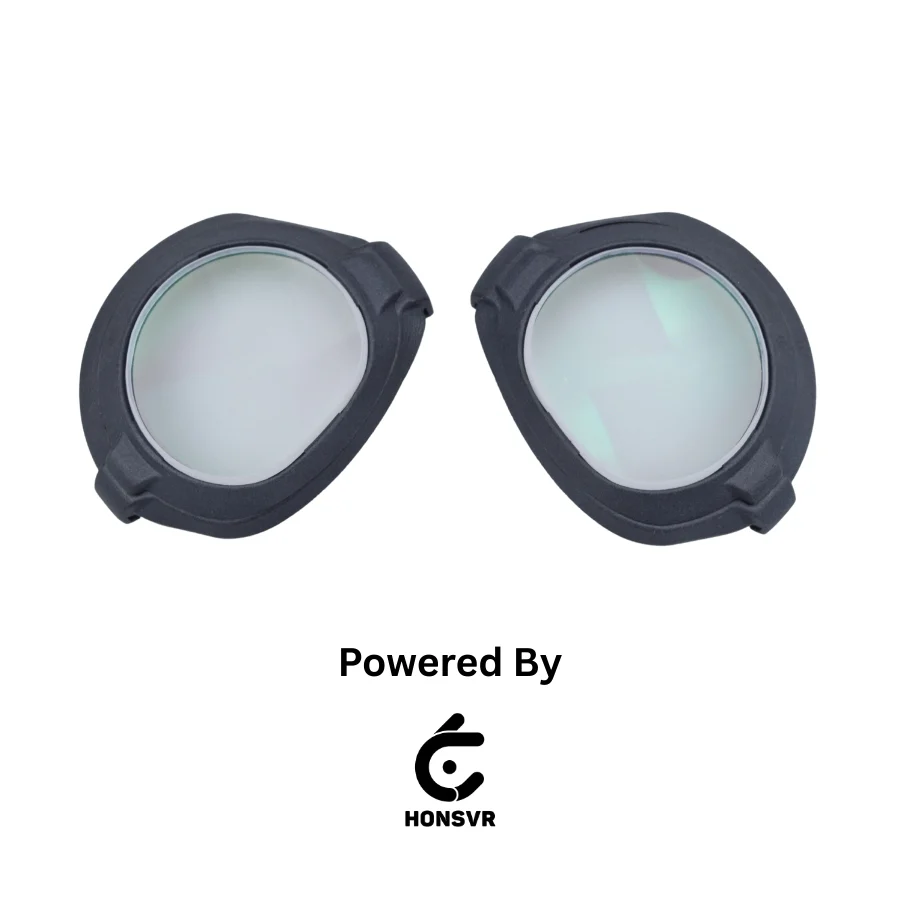
The catch with prescription lens inserts for VR headsets has always been the cost – typically £100-160 on top of your already pricey headset. But right now, Pimax are bundling HonsVR prescription inserts (normally £125) plus DMAS speakers (£75) free with the Crystal Super. That’s £200 of kit that actually makes sense for sim racers.
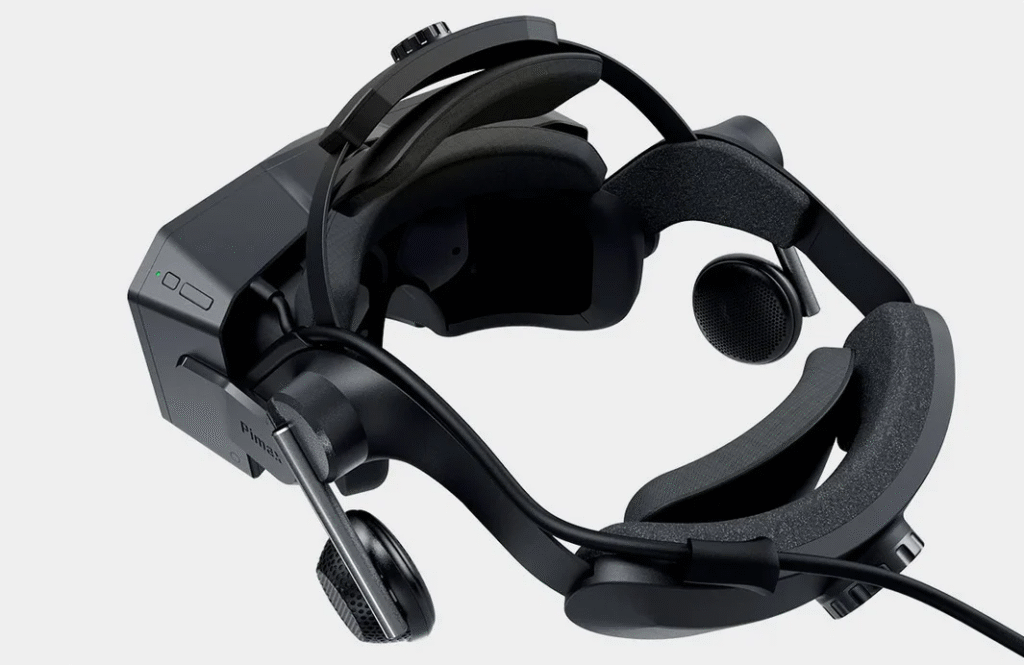
The Crystal Super’s Visual Edge
Let me put this in perspective. The Crystal Super offers:
- 57 PPD clarity with the standard QLED engine (most headsets manage 20-35 PPD)
- Swappable optical engines – choose between maximum clarity or wider FOV
- Local dimming with 1000 zones per eye for proper blacks
- Native DisplayPort connection – no compression, no compromises
For sim racing, where reading tiny text on dash displays and spotting braking references at 200mph matters, this level of clarity is transformative. Several users have reported that switching from Quest 3 or PSVR2 to the Crystal Super feels like “finally being in the car” rather than playing a game.
Making Your Choice
So which vision solution should you go for? Here’s my take:
Starting out in VR sim racing? Try your regular glasses first. The Crystal Super has the space, and you’ll know quickly whether VR racing is for you.
Regular contact wearer? Stick with them – you’ll get the full benefit of that wide FOV and unrestricted head movement.
Serious about your lap times? Those free prescription inserts are a no-brainer. Custom-made for your eyes and the headset’s optics, they’ll give you every advantage when hunting for those extra tenths.
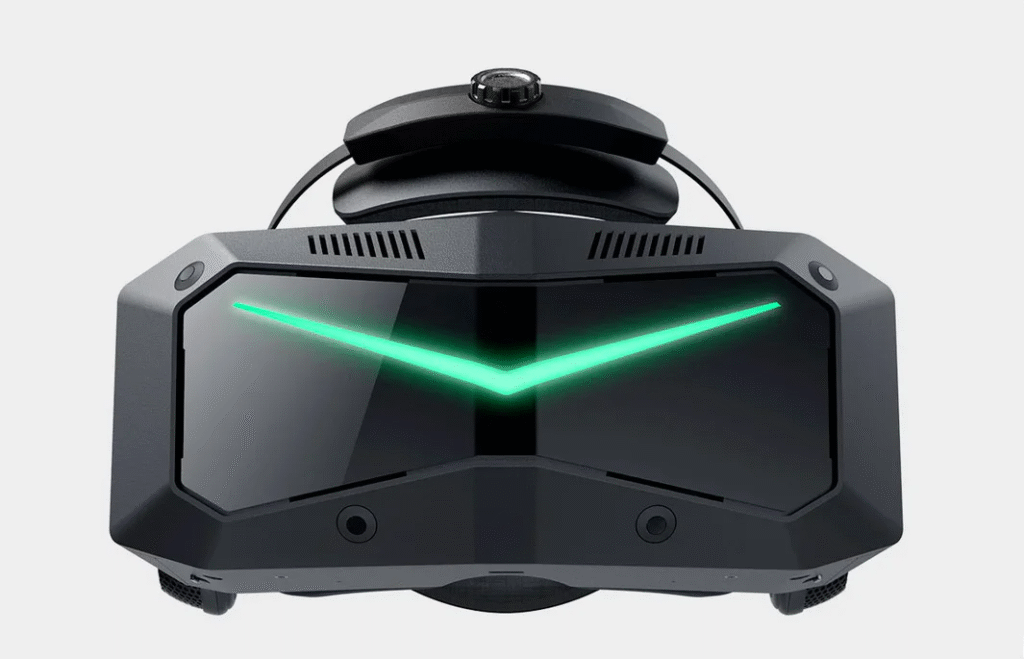
The Bottom Line
The Crystal Super already sits at the top of the VR food chain for sim racing clarity. With prices starting at $1,695 (around £1,300), it’s a serious investment. But throwing in £200 worth of prescription lenses and audio makes it considerably more attractive for those of us who can’t see properly without help.
The offer runs until September 20th, and whilst I’m always sceptical of limited-time deals, this one does make sense. Prescription inserts are something most glasses-wearing sim racers end up buying anyway, so getting them free effectively drops the real cost by about 10%.
Just remember – all the pixels in the world won’t help if you can’t see them clearly. Whether that’s through glasses, contacts, or prescription inserts, making sure your vision is sorted is just as important as having a proper rig or decent pedals. After all, you can’t hit what you can’t see!
Related Articles
Pimax Crystal Super and Light Settings Guide: A Complete Guide Sorted by GPU
Pimax Crystal Super Review: Outstanding Clarity Meets Real-World Compromises
Pimax Crystal Light Settings for Sim Racing (iRacing / ACC)
Improving that Terrible Quest 3 Headstrap with a Replacement
Meta Quest 3: A Review for Sim Racers and Occasional VR Gamers
Pimax Crystal Light in the Simulator with iRacing: Review
Topic: VR Headsets

